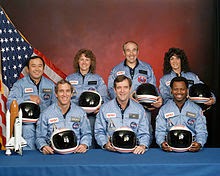It is largely unknown what the actual time of death for the crew was, but it is believed that they survived the initial breakup of the craft. However, even if all seven had survived the initial disaster, the impact of the compartment into the Atlantic Ocean was not a survivable event.
The Challenger disaster resulted in a 32-month long freeze in America's Space Shuttle program. President Ronald Reagan immediately appoint the Roger's Commission to investigate the tragedy. Much to the chagrin of many, the Roger's commission found that the disaster could be attributed to NASA's decision making process, as much as anything else. The commission found that NASA had been aware of flaws in the design of the O-rings since 1977 and had done nothing to remedy the problem. In addition, they found that engineers had warned of possible issues with launching that morning because of the low temperatures. These warnings failed to reach the supervisors who ultimately would make the decision. The Challenger disaster has been used as a case study in many engineering classes as a study in work place ethics and engineering safety.
Another result of the disaster was the Air Force's decision to scrap their plans to use space shuttle's for classified military satellite launches, and instead use the Titan IV rockets instead.
The media coverage of this launch was much larger than other recent launches because of the presence of Christa McAuliffe on the crew. Christa was suppose to be the first teacher in space. It has been estimated that up to 20% of Americans were watching the launch live (including many classrooms) and a survey found that over 85% of Americans had heard of the disaster within an hour.
~~~
Bruce has worked in educational technology for over 18 years and has implemented several 1:1/BYOD programs. He also has served as a classroom teacher in Computer Science, History and English classes. Bruce is the author of five books: Sands of Time, Towering Pines Volume One:Room 509, The Star of Christmas, Philadelphia Story: A Lance Carter Detective Novel and The Insider's Story: A Lance Carter Detective Novel. Follow Bruce's Novel releases by subscribing to his FREE newsletter!
Be sure to check out Bruce's Allentown Education Examiner Page, his Twitter and his Facebook!


No comments:
Post a Comment